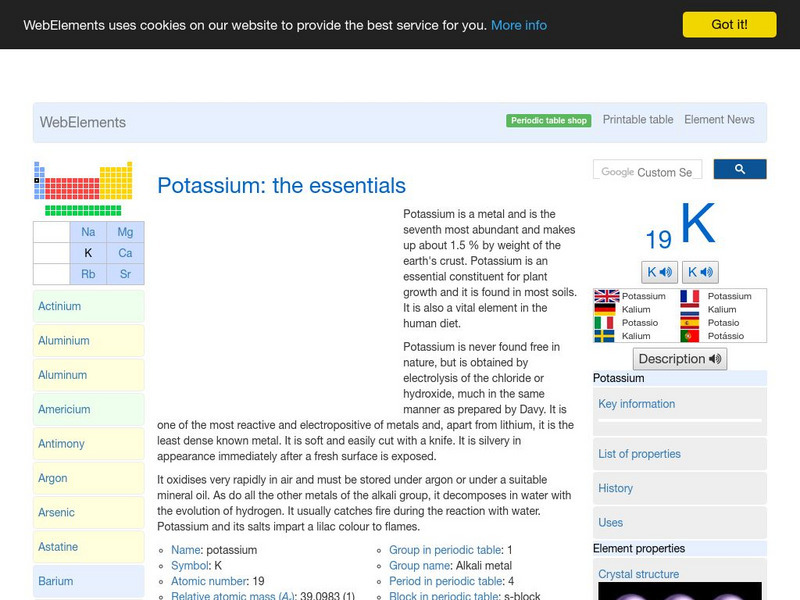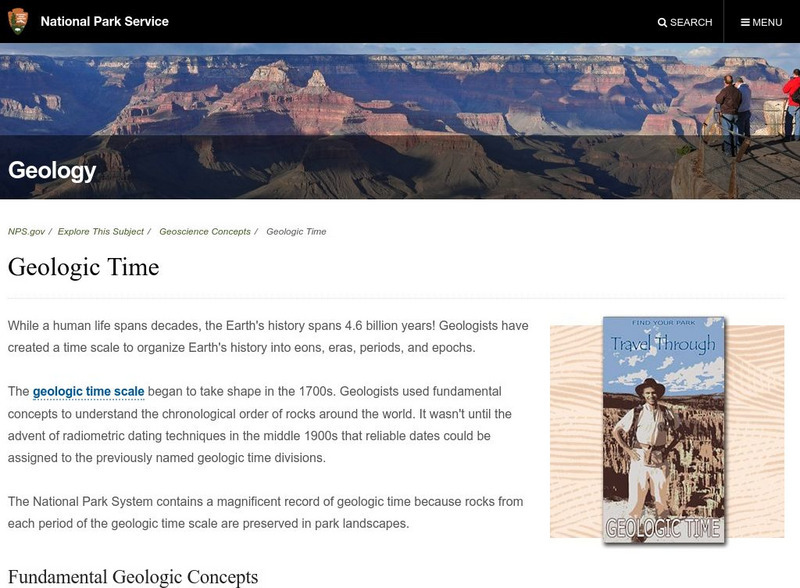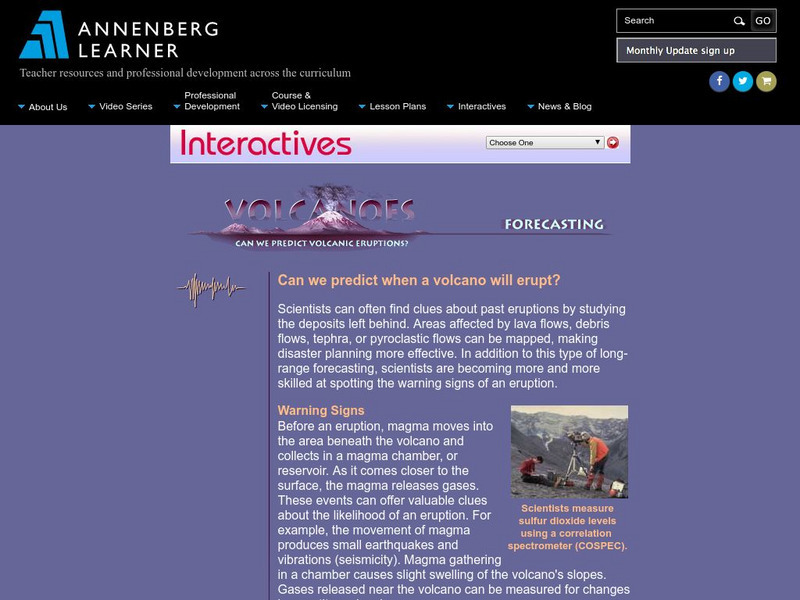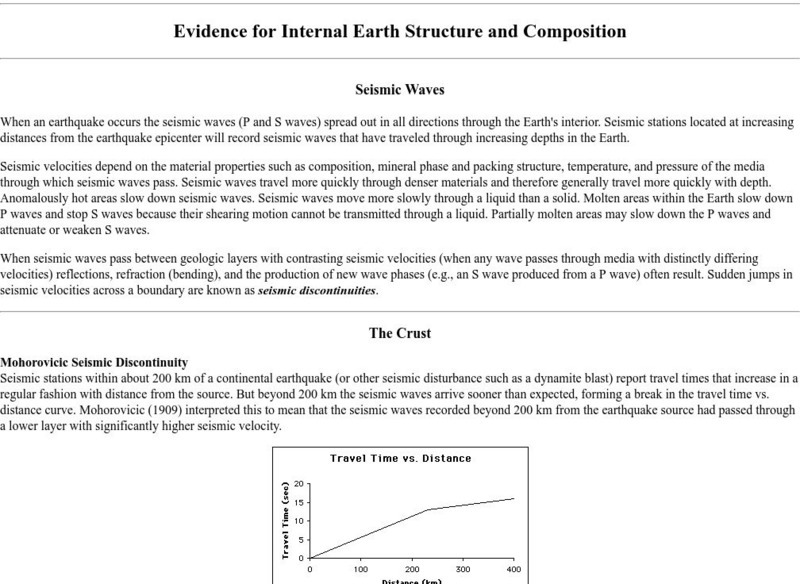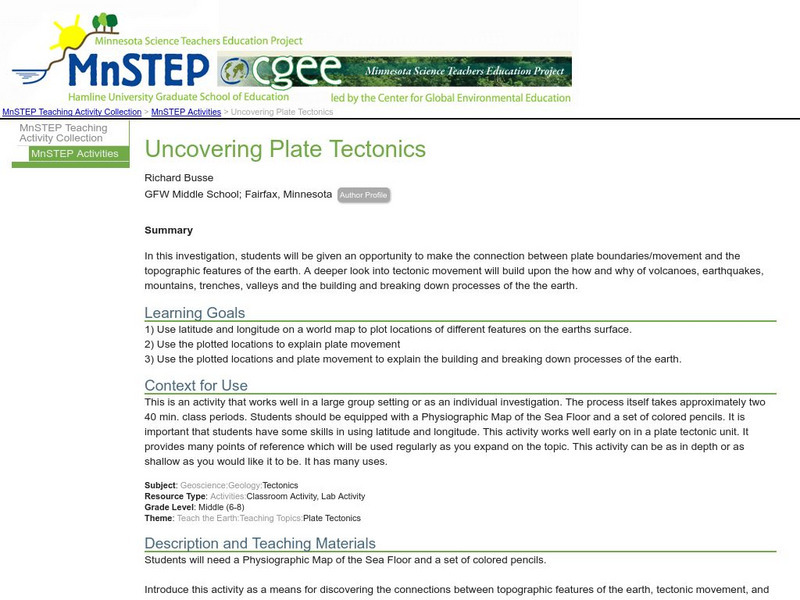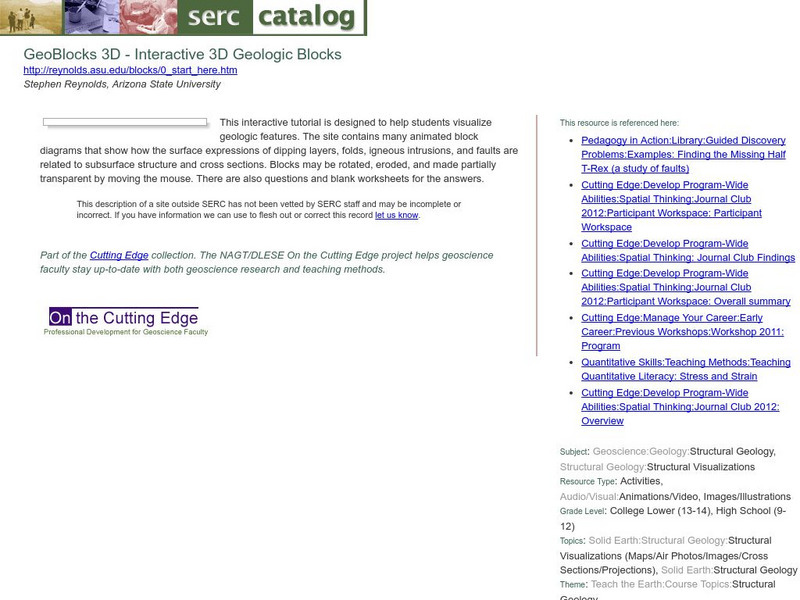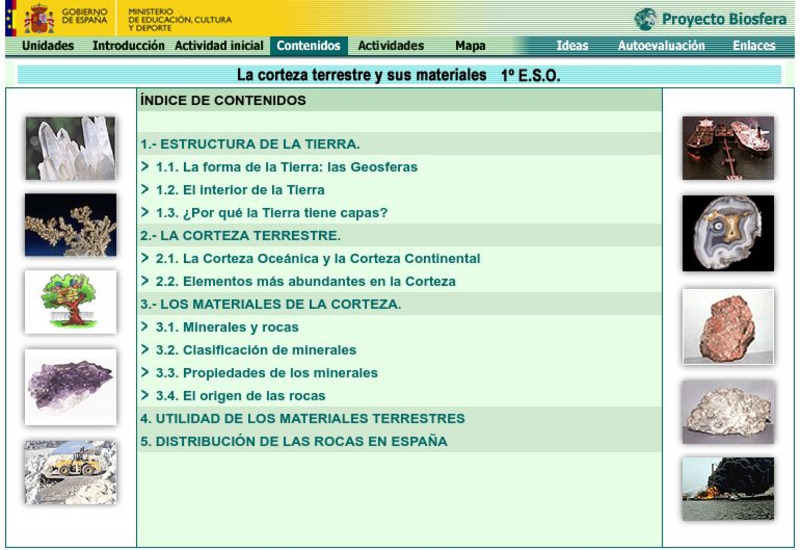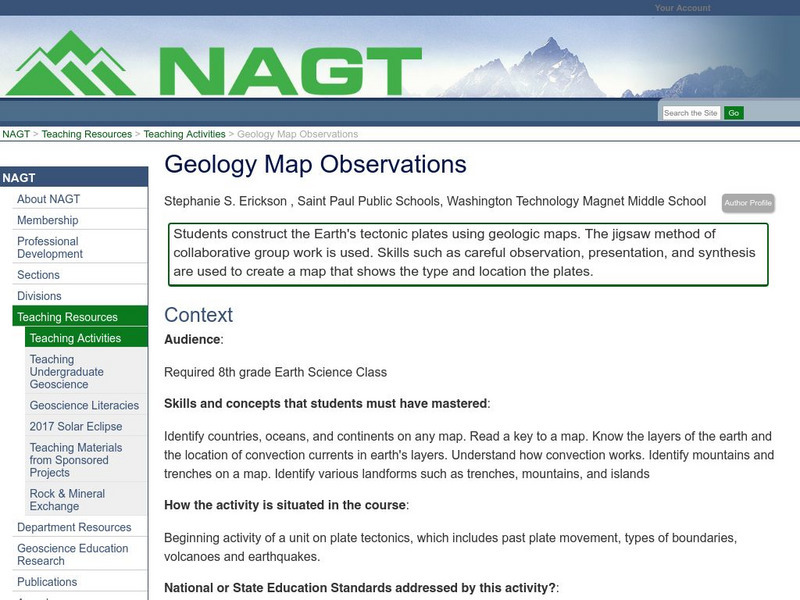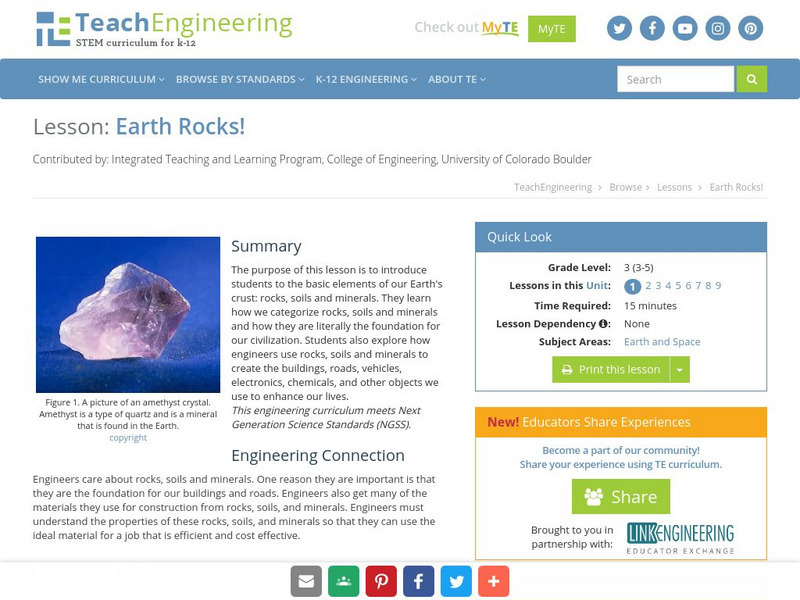Other
The National Academies of Sciences, Engineering, and Medicine: Project Mohole
Project Mohole was "the earth sciences' answer to the space program," a project to gain information about the Earth by drilling a hole through the Earth's crust to the Mohorovicic Discontinuity (Moho). This website gives a history of the...
Smithsonian Institution
National Museum of Natural History: Paleobiology: Geologic Time: Hadean Eon
Journey into the past while reading this comprehensive overview of the Hadean Eon that covers topics such as the formation of the earth, its surface and atmosphere, fossil evidence, erosion and plate tectonics.
TeachEngineering
Teach Engineering: Engineering for the Earth
Young students are introduced to the complex systems of the Earth through numerous lessons on its natural resources, processes, weather, climate and landforms. Key earth science topics include rocks, soils and minerals, water and natural...
Web Elements
Web Elements Periodic Table: Potassium
This WebElements site provides a great deal of elemental information. There are audio files demonstrating the correct pronunciation of the element name, pictures showing the electron shells, and information on isotopes, properties and more.
Curated OER
National Park Service: What Is Geologic Time?
A discussion of geologic time, along with a presentation of evidence for the time span involved.
Annenberg Foundation
Annenberg Learner: Volcanoes: Forecasting Eruptions
A look at some of the methods and problems with forecasting volcanic eruptions.
National Geographic
National Geographic: Encyclopedia: Mantle
An in-depth look at the structure and composition of Earth's mantle, with lots of visuals. Covers lithosphere, Mohorovicic discontinuity, asthenosphere, transition zone, lower mantle, the d double-prime region, mantle convection, mantle...
Other
University of Texas Arlington: Isostasy, Gravity, Magnetism, and Internal Heat
An in-depth look at how isostasy works and the processes taking place during glaciation and the melting of glaciers. Looks at gravity and the effects of density differences within the crust and mantle, and at Earth's magnetic field and...
Columbia University
Columbia University: Evidence for Internal Earth Structure and Composition
This resource describes how seismic waves have helped us to understand the composition of the Earth's interior. It discusses seismic discontinuities, including the Mohorovicic Discontinuity or Moho, and what we have learned about the...
Utah State Office of Education
Utah Science: Rocks, Minerals, and Soils Introduction
Dig into the layers of activities exploring and investigating minerals and how they are related to both rocks and soil.
Smithsonian Institution
National Museum of Natural History: This Dynamic Planet
Research and explore past earthquake and volcanic activity on this interactive world map. User can manipulate which notable events and other map characteristics to view depending on the type of study being done.
Columbia University
Columbia University: Evidence for Internal Earth Structure and Composition
College-level research information describes how the movement of Earth's interior causes seismic wave activity.
NOAA
Noaa: Structure of the Earth [Pdf]
Create a model to help learn the layers and structures within the Earth. Identify characteristics of each layer of the Earth.
Science Education Resource Center at Carleton College
Serc: Uncovering Plate Tectonics
In this investigation, middle schoolers will be given an opportunity to make the connection between plate boundary movement and the topographic features of the earth.
Science Education Resource Center at Carleton College
Serc: Geo Blocks 3 D Interactive 3 D Geologic Blocks
This interactive tutorial on visualizing geologic features contains animated block diagrams that show how the surface expressions of dipping layers, folds, igneous intrusions, and faults are related to subsurface structure and cross...
National Institute of Educational Technologies and Teacher Training (Spain)
Ministerio De Educacion: La Corteza Terreste Y Sus Materiales
In this site learn about the structure of the Earth, the Earth's crust, and the usefulness of the earth materials. It contains many illustrations and 15 interactive activities.
Other
Web ref.org: Aluminum
Here you can find a detailed overview of aluminum. Content includes a focus on aluminum's chemical properties, occurrence in nature, uses, and production.
Other
Chemical Elements: Potassium
A nice, clear site, containing a good deal of elemental information, including atomic weight, density, boiling point, isotopes and more. An image shows the electron energy levels for the element.
Morning Earth
How Life Works: Biosphere Is Process: Life Helps Make Earth's Crust
Scholars explore the Earth science topic of the Earth's basic structure. The tutorial consists of definitions and pictures about the Earth's crust.
National Association of Geoscience Teachers
Nagt: Geology Map Observations
In jigsaw groups, students construct the Earth's tectonic plates using geologic maps. Skills such as careful observation, presentation, and synthesis are used to create a map that shows the type and location the plates.
TeachEngineering
Teach Engineering: Earth Rocks!
The purpose of this lesson is to introduce students to the basic elements of our Earth's crust: rocks, soils and minerals. They learn how we categorize rocks, soils and minerals and how they are literally the foundation for our...
CK-12 Foundation
Ck 12: Earth Science: Earth's Crust
[Free Registration/Login may be required to access all resource tools.] Describes the makeup of the Earth's crust.
CK-12 Foundation
Ck 12: Earth Science: Earth's Crust
[Free Registration/Login may be required to access all resource tools.] Describes the makeup of the Earth's crust.
Web Elements
Web Elements Periodic Table: Magnesium
An extremely thorough summary of the properties and uses of magnesium. Very easy to follow.




